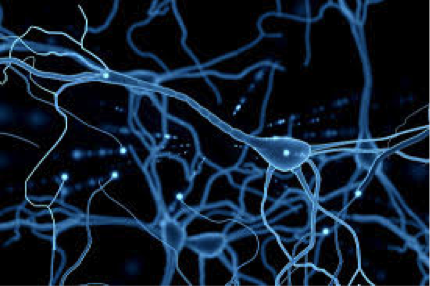How does learning change your brain?
What really happens in your brain when you learn something new? We know that training and practice are so important to hone our skills. Practice makes perfect, right? But, doing something again and again doesn’t just make it easier. It actually changes the brain.
The brain begins to form when we are embryos within the womb. Each part is specialized to different skills, and it is made of up billions of nerve cells, called neurons. These cells talk to each other, as the environment around us sends incoming signals causing neurons to fire and build connections, which creates networks throughout the brain. The term neuroplasticity is the capacity of the brain to change.
When learning something new, the first attempt will likely not be perfect. For example, beginning to walk – first we crawl, then we stand up and fall, then we stand up walk a couple steps before falling, and we gradually become more efficient with the skill, as our neurons begin to fire and wire together to create new networks.
Sometimes when you learn something new, the acquisition is easy. However, other times, it can be very difficult – or, sometimes, you may learn something incorrectly and it is difficult to change to the correct pattern.
As children, the immature brain begins to organize itself. However, if signals are not being formed efficiently across the brain, then they need to be reorganized and rewired. Think of a busy single-lane highway that is poorly paved. How about a busy three-lane highway that was freshly paved? How much faster are you likely to reach your destination on the latter highway? How much more efficient was your gas mileage? As therapists, we want to provide stimulation to create more highways, as well as to provide more practice to enable participation and repetition to make these highways smooth and efficient.
So, what are some strategies to help change your children’s experiences to be more efficient in forming clearer connections when skills are being acquired, or are more difficult to acquire?
| Principle of Neuroplasticity | Intervention Strategies | Factors that Support Neuroplasticity |
| Timing | Early intervention is key. | Plasticity is greater in childhood. |
| Attention | Model “in the moment” feedback to child and caregiver. | For learning to occur, the child must attend to the activity. |
| Stimulation | Infants and toddlers learn best in familiar contexts with familiar people. | Sufficient stimulation is needed to create the long-term potentiation in synapses that creates durable memory. |
| Specificity | Identify regularly occurring routines. | The type of stimulation affects the outcome of the stimulation (e.g., visual processing practice improves visual processing, but not auditory processing). |
| Reward | With challenging behaviors, determine the function of the behavior and then teach an alternative and more appropriate social communicative behavior. | Sustain attention and activation of targeted skills, thereby improving learning. |
| Repetition | Embed intervention into everyday activities and interactions. | Repetition is essential for strengthening knowledge and skills. |
| Intensity | Recommended 25 hours per week in which the child is actively and productively engaged in meaningful activities. | Sufficient intensity is needed to create change in the brain. |
| Duration | Utilize a team approach that includes caregivers in all aspects of intervention planning and implementation. | Sufficient duration of stimulation is needed to create change and maintain knowledge and skills. |
[1]
Losardo A (2016) Neuroplasticity and Young Children with Autism: A Tutorial. Anat Physiol 6:209. doi:10.4172/2161-0940.100020




